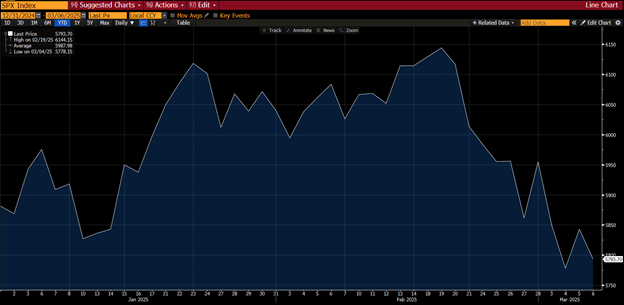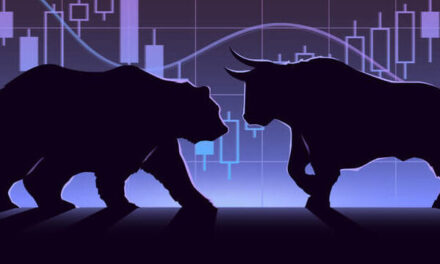If there is one word to describe market action over the last two months, it’s volatile.
The reason why: Wall Street despises uncertainty.
It’s safe to say there’s been no lack of uncertainty over the last few months.
First, we had the hope that inflation would continue trending lower, but that was quickly followed by fears that inflation would only reverse course … forcing the Federal Reserve to revert to its rate-hiking posture.
Then, we had tariffs.
When he entered office, President Donald Trump spoke volumes about using tariffs as a way to combat other countries from allowing illegal immigrants and drugs through our borders. He announced planned levies targeting Canada, Mexico and China — America’s three largest trading partners.
In February, tariffs against Canada and Mexico were temporarily paused, but Trump went forward with a 10% duty on goods coming from China.
This month, 25% duties were applied to goods coming from north and south of the border … with the exception of parts used to manufacture automobiles.
Yesterday, however, the Trump Administration announced yet another delay, leading to further confusion.
All of that alone has made the market’s head spin … causing the S&P 500 to trade between 6144.15 and 5778.15 points — a difference of 6.3% from the high to the low.
S&P 500 Swings 6.3% Since January

In intraday trading yesterday, the VIX matched its year-to-date high, indicating that the volatility period isn’t over yet.
All of this has left investors from Wall Street to Main Street looking for some silver lining amid the clouds of volatility.
There is something to focus on…
It’s All About Beta
I recently wrote about beta to our Green Zone Fortunes PRO subscribers.
Beta is a product of volatility.
The number shows the level of risk associated with that stock. Stocks with lower beta are less prone to move as much as the broader market.
Here’s what I told PRO subscribers…
Beta helps investors understand how much additional risk they are taking on when they add a particular stock to their portfolio.
The higher the beta, the higher the risk because that stock is likely to move higher or lower at a much faster rate of change.
In times of uncertainty in the market — especially when volatility is high — the search for new investment should include stocks with low beta.
Any stock with a beta less than 1 means that the stock is less volatile than the broader market.
Of course, that isn’t the only metric you should look at, which is why Adam’s Green Zone Power Ratings system is such an important tool to use … particularly when the market is as volatile as it is today.
Beta is one of the 80 subfactors we use in the system and is included in the Volatility factor.
Today, it’s more important than ever to arm yourself with as much as you can in order to make smart decisions with your portfolio.
Beta, and to a broader extent, the Green Zone Power Ratings system, is just the tool you need.
If you’re wondering how to gain unlimited access to Adam’s system to see how thousands of stocks rate Volatility, click here to learn how you can join Green Zone Fortunes, Adam’s premium stock research service, today.
That’s all from me today. Have a great weekend!
Until next time…
Safe trading,

Matt Clark, CMSA®
Chief Research Analyst, Money & Markets





